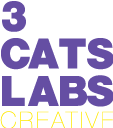Have you noticed anything in particular about the advertisements that get shared, talked about, and you can recall for months, or even years later? You might notice that those advertisements are the type that tugged at your heartstrings a little bit. There’s a purpose for that, and it’s because using emotions in advertising has shown to promote sharing on social media and increasing likeliness to buy.
The 4 Emotions in Advertising
Traditionally people recognized happy, sad, angry, disgusted, surprised, and afraid as the core emotions. However, in 2014 the Institute of Neuroscience and Psychology published a research document finding that some of the distinctions of the core emotions are based upon social constructs and interactions. Instead they found that human emotions are based upon these four basic emotions: happy, sad, angry/disgusted, and afraid/surprised.
1. Happy
This might be the most obvious on the list and that’s why it’s first here. Brands always want to be associated with positivity; and that means smiles, laughter, and happy people. Studies, including this 2010 New York Times article showed that emotional articles were the most shared and positive posts were shared more than negative posts.
Android’s Friends Forever advertisement was one of the most shared ever and is still popular. It’s undeniably cute. Who doesn’t get a smile watching these unlikely animal buddies.
Or this advertisement from Norway as part of Coca-Cola’s Taste The Feeling campaign. Every shot in this spot is happy and positive. Do you want a Coke?
2. Sad
If happy gets attention and people like to connect with positive messages, then why is sadness on here? You may have noticed a recent rend in advertisements that are emotional and overwhelmingly sad. Some Asian advertisements have made global waves by being sad.
This MetLife Hong Kong advertisement is guaranteed to cause some tears. A little girl describes all that she loves about her father, and also all the ways he lies to her.
Thai advertisers have become masters at making people cry during advertisements. On TV, cinemas, and of course on YouTube. This advertisement for the National Cancer Institute is a tearjerker. If you’re at the office, you might have to explain your emotionally stable afterwards,
3. Angry/Disgusted
Most people prefer to avoid anger because its generally seen as one of the emotions in advertising that has caused problems for brands. It comes with negative connotations and typically a brand doesn’t want to be associated with negativity. However, if skillfully applied anger can wake people up and compel them to act. Anger and disgust can cause us to review our perspective because it can be caused when witnessing an injustice or that another person is hurt.
Yes, positive content is more popular amongst advertisements and images that go viral, however when a negative image has an element of surprise or anticipation it can become incredibly popular.
The Like A Girl campaign for Always won an Emmy, a Cannes Grand Prix, and a Grand Clio award after its release in 2014. Everyone knows the insult, and that’s how it grabs your attention.
Or this Save The Children advertisement about the crisis in Syria. It follows a young girl for one second a day. In the end it triggers sadness and anger.
4. Afraid/Surprised
Fear is a natural response and it prompts quick action.It helps us react appropriately to survive. It triggers us to instantly decide fight or flight and take that action within a split-second. Triggering fear in an advertisement is supposed to compel an audience to act. This is a very delicate emotion to trigger and can easily go wrong.
“Advertising is based on one thing: happiness. And you know what happiness is? Happiness is the smell of a new car. It’s freedom from fear. It’s a billboard on the side of the road that screams reassurance that whatever you are doing is okay. You are okay.”
– Don Draper of MAD MEN
The World Wildlife Fund is well known for its scary and fear inducing print and video advertisements. The fish advertisement from Germaine in Belgium is one that has really stood out.

However, an example of how the use of fear can lead to failure is the 2015 advertisement during the Super Bowl to advertise Nationwide that led to the resignation of Nationwide’s CMO because of how the advertisement was received by the public. The ad features a child recounting all the things he’ll never do because he died in a road accident.
It’s not all fear and negativity though. The Ad Council’s Love Without Labels advertisement uses surprise as something positive and triggers viewers to feel good.
Let’s Talk About Your Brand
shane@3catslabs.com | Call +65-3159-4231
Share



